As someone who has been fortunate enough to visit Pashupatinath Temple in Kathmandu, Nepal, I can attest to the profound impact that this holy site can have on one’s spiritual and cultural understanding. The temple, dedicated to Lord Shiva, is renowned for its ancient architecture and rich traditions passed down through generations of Hindu worshippers.
During my visit to Pashupatinath Temple, I was struck by the sheer size and grandeur of the temple complex, encompassing numerous shrines, courtyards, and bathing ghats. The evening I spent there was especially memorable, as the soft glow of oil lamps illuminated the temple, and the air was filled with incense and flowers.
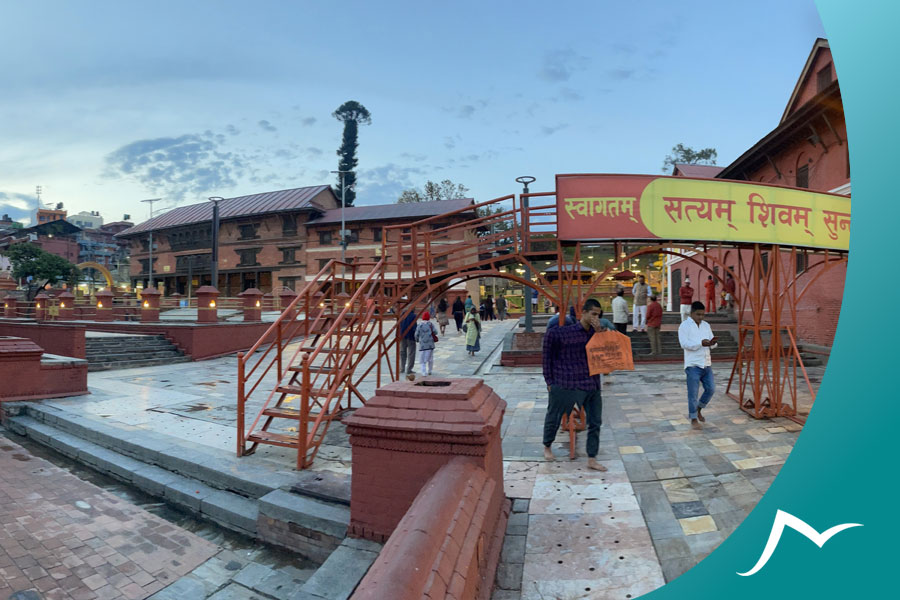
As I wandered the temple grounds, I observed devotees engaging in various rituals and ceremonies, from performing puja at the main shrine to taking holy dips in the sacred Bagmati River. Seeing so many people coming together to pay their respects to Lord Shiva was truly awe-inspiring, and I felt a deep reverence and peace as I absorbed the temple’s energy.
My experience at Pashupatinath was a powerful reminder of the importance of faith, culture, and community. I look forward to sharing more about my journey in this blog post and hope to inspire others to explore this incredible place for themselves.
The Journey to Pashupatinath Temple
My journey to Pashupatinath Temple began after my lunch, around 3 pm, as I made my way through the bustling streets of Kathmandu. I opted to take a local taxi to the temple, which allowed me to reach my destination quickly. As we drove towards the temple, I was struck by the city’s vibrant energy, with its colorful buildings, street vendors, and bustling markets.
Despite the city’s excitement, I grew increasingly introspective as we approached Pashupatinath. I knew this temple held great spiritual significance for many people, and I wanted to close my visit with respect and reverence.
In preparation for my visit, I researched the temple and its customs. I read about the importance of removing one’s shoes before entering the temple complex and the various rituals and offerings performed by devotees. I had also dressed modestly, wearing long pants and a comfortable shirt that covered my shoulders.
As we arrived at the temple, I could feel my heart racing with anticipation. The taxi dropped me off near the main entrance, and I approached the temple gates. I was immediately struck by the peacefulness of the surroundings, with birds chirping and the gentle rustling of leaves providing a calming backdrop to the temple complex.
Overall, my journey to Pashupatinath was a powerful reminder of the importance of mindfulness and intention when visiting spiritual sites. By taking the time to prepare myself and approach the temple with respect and reverence, I fully immersed myself in this remarkable place’s spiritual energy.
The Ambience of Pashupatinath
I spent at Pashupatinath Temple was genuinely magical. As the sun set, the temple atmosphere shifted, with a sense of quiet reverence settling over the crowds. Despite the large number of visitors, the temple maintained a sense of tranquility, with the soft lighting and gentle sounds creating a serene ambiance.
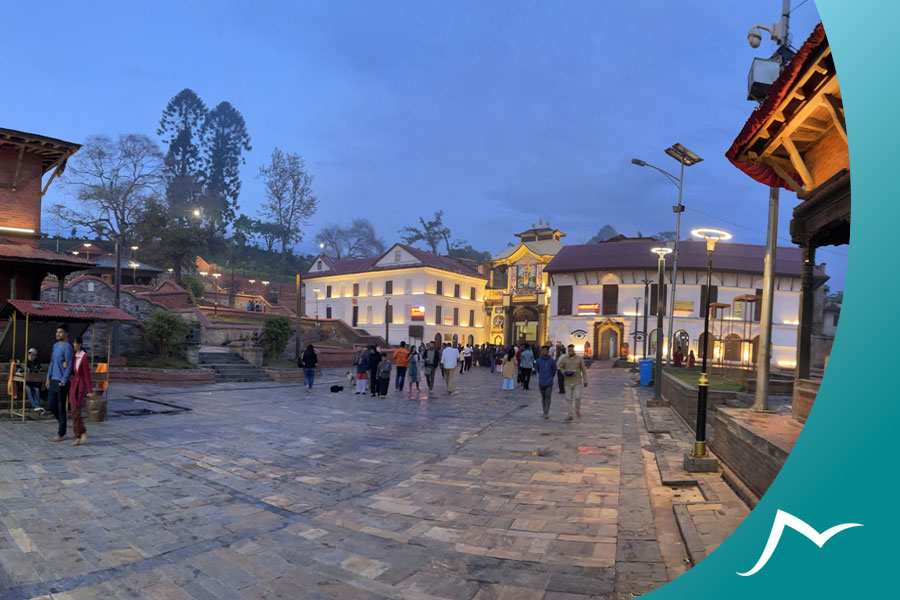
One of the most striking features of Pashupatinath during the evening was the lighting. The temple complex was illuminated by the soft glow of oil lamps, which cast a warm, golden light across the grounds. The lamps were placed throughout the temple, creating a stunning visual display that added to the spiritual energy of the surroundings.
However, as I walked through the temple premises, I could not enter the Main temple premises; the sounds struck me, and the smells filled the air. The sound of chanting and bells could be heard in the distance, adding to the otherworldly atmosphere of the temple. The fragrance of incense and flowers was also present, creating a sensory experience that was both calming and energizing.
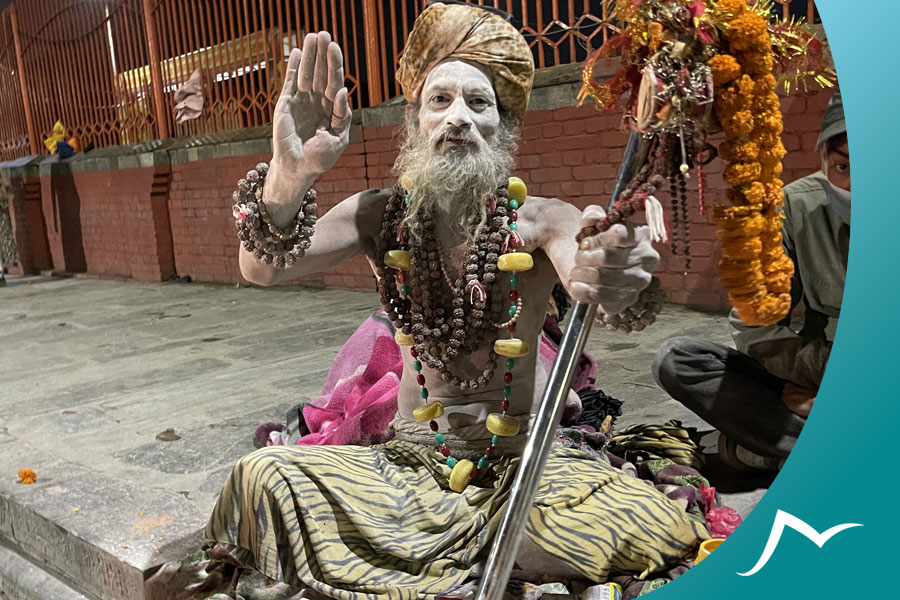
One unique feature of Pashupatinath that stood out to me was the presence of sadhus, or holy men, who could be seen throughout the temple complex. These men were dressed in vibrant orange robes and had ash smeared on their foreheads, and they exuded a sense of otherworldliness that was genuinely captivating.
Overall, the ambiance of Pashupatinath during the evening was remarkable. The temple’s unique lighting, sounds, and smells combined to create an immersive and unforgettable spiritual experience.
Observing the Rituals and Traditions at
One of the most potent aspects of visiting Pashupatinath Temple was observing the various rituals and traditions. From the aarti ceremony to the offerings made by devotees, each aspect of the temple’s spiritual practices deepened my understanding of Hinduism and its rich cultural heritage.
I also observed many other rituals and traditions at Pashupatinath. Devotees could be seen making offerings of flowers, food, and money to the various deities, and many also took part in ritual bathing in the Bagmati River. Each of these practices served as a powerful reminder of the deep spiritual significance that is attached to this temple and the Hindu faith as a whole.
The aarti ceremony
The aarti ceremony was a particularly memorable experience. As the sun began to set, devotees gathered along the banks of the Bagmati River, where they were treated to a stunning display of song, dance, and prayer. The ceremony was led by a group of priests, who chanted ancient hymns and waved burning lamps in the air.
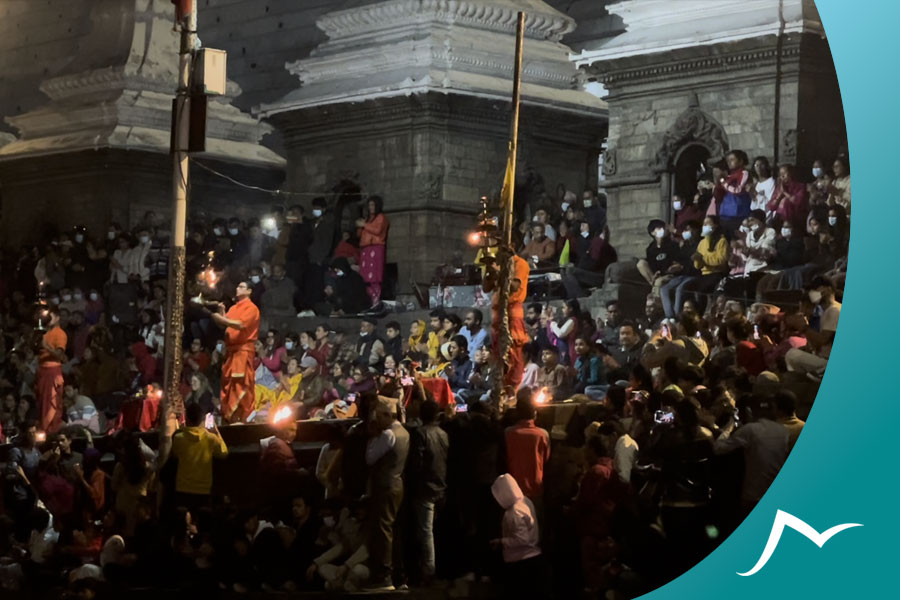
I felt a deep reverence and awe as I watched the ceremony. The devotion of the worshippers was palpable, and the beauty of the ceremony was truly awe-inspiring. It was a powerful reminder of the capacity of human beings to connect with something greater than themselves and of the importance of spiritual practices in our daily lives.
The funeral ceremony
During my visit to Pashupatinath, I was struck by the solemnity and emotional depth of the funeral ceremony I witnessed. The cremation ghats were set up along the banks of the Bagmati River, with families gathered around the funeral pyres, their faces etched with sorrow.
As the priests conducted the final rites and offerings, the atmosphere was thick with tradition and ritual. Despite the sadness, there was also a feeling of peace and closure in the timeless traditions and rituals passed down through generations.
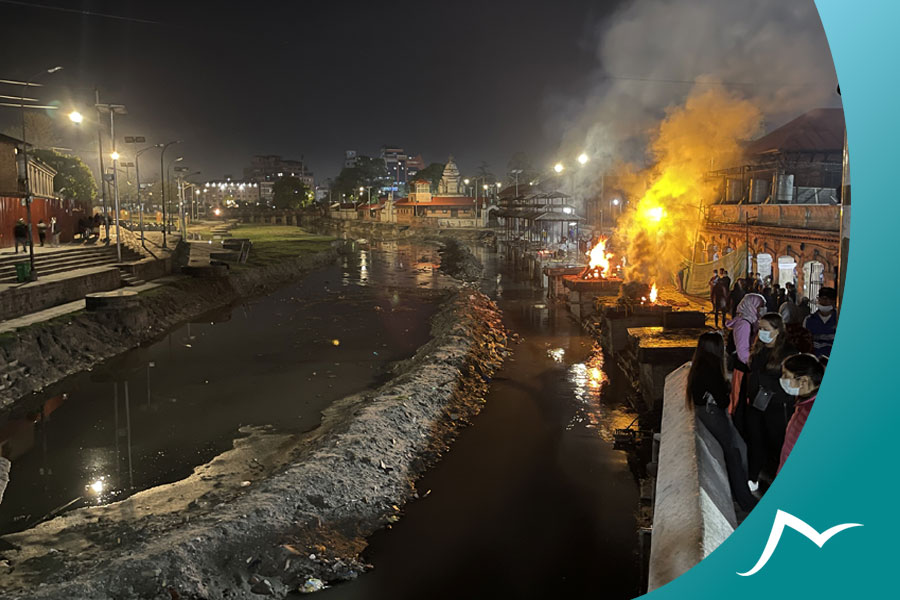
Witnessing the funeral ceremony at Pashupatinath was a poignant reminder of the inevitability of death and the comfort and solace found in traditions and rituals. It was a profoundly moving experience that left a lasting impression on me.
Other ritual ceremonies
In addition to the funeral and aarti ceremonies, I observed many other rituals and traditions during my visit to Pashupatinath. These practices served as a window into the deep spiritual significance of the temple and the Hindu faith as a whole.
One of the most common rituals I observed was offering flowers and food to the various deities at the temple. Devotees could be seen walking around the complex with plates of offerings, seeking blessings from the gods and goddesses they worshiped.

Another common practice was ritual bathing in the Bagmati River. Many devotees believe that the river’s waters have cleansing and purifying properties, and as such, they dip in the river before entering the temple. I was struck by the sense of devotion and reverence that the devotees displayed as they performed this ritual.
One of the more unusual traditions I observed was tying small bells to the trees surrounding the temple. Devotees believe that the ringing of the bells helps to ward off evil spirits and bring good luck and prosperity. Walking around the temple complex, the bells ringing in the breeze created a soothing and peaceful atmosphere.
Overall, my experiences of observing these various rituals and traditions at Pashupatinath left me with a deep sense of awe and wonder. They served as a powerful reminder of the enduring power and significance of the Hindu faith and left me with a newfound appreciation for the rich cultural heritage of Nepal.
Exploring the Marketplace of Pashupatinath
During my visit to Pashupatinath Temple, I couldn’t help but notice the bustling marketplace just outside the temple grounds. Known as the “Marekate Pace,” this market is a hub of activity, with vendors selling everything from religious items to souvenirs.
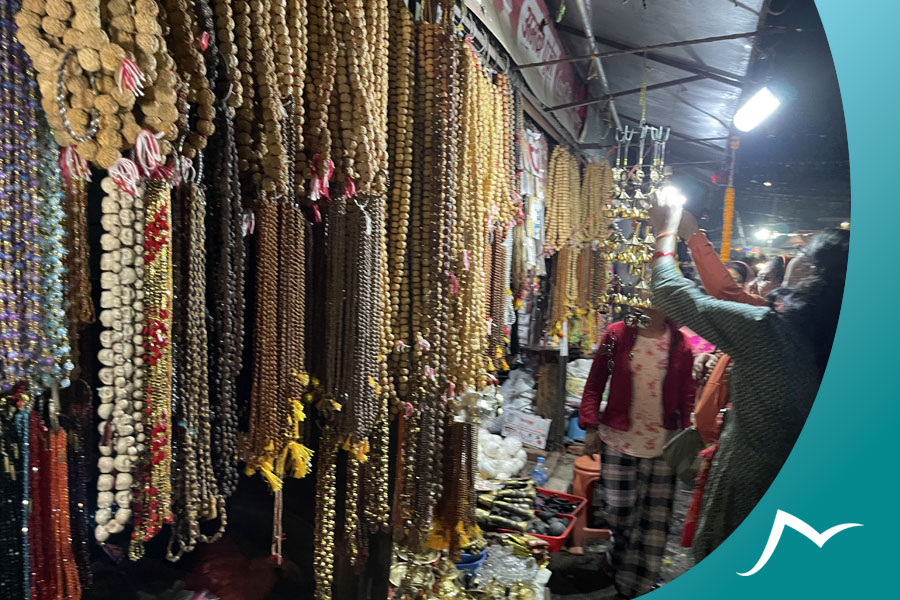
One of the most popular items sold at the Marekate Pace is the rudraksha, a type of prayer bead made from the seeds of the rudraksha tree. These beads are believed to have spiritual and healing properties and are often worn as a necklace or bracelet by devotees of Lord Shiva.
In addition to the rudraksha, the Marekate Pace is also home to various souvenirs and trinkets, such as statues of Hindu deities, incense, and colorful prayer flags. These items make great gifts or souvenirs for your visit to the temple.
For those looking to purchase items for worship, the Marekate Pace also offers a range of offerings, such as flowers, coconuts, and other things for puja rituals. It’s important to note that haggling is expected in the marketplace, so feel free to negotiate for the best price.
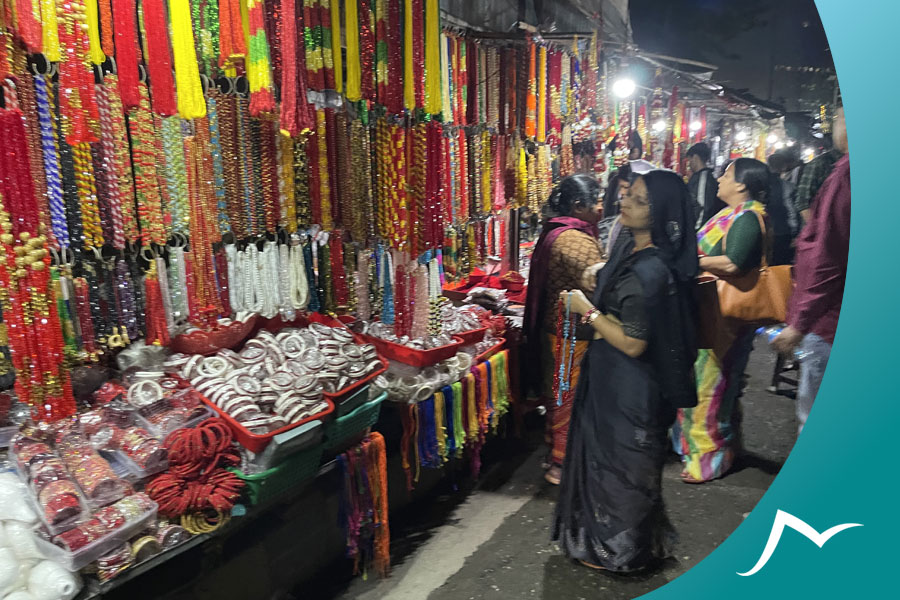
Overall, the Marekate Pace is a vibrant and lively market that offers visitors a glimpse into the bustling world of Hindu spirituality and tradition. Whether you’re looking to purchase a souvenir, a spiritual item, or soak in the atmosphere, the Marekate Pace is well worth a visit.
Interactions with the Locals
One of the highlights of my visit to Pashupatinath was the opportunity to interact with the locals who call the temple and its surrounding areas home. From street vendors selling souvenirs to pilgrims making their way to the temple, each person I encountered offered a unique perspective on life in Nepal and Pashupatinath’s role in their daily lives.
One of my most memorable interactions was with a group of young Nepali boys playing cricket near the temple. As I watched them play, they invited me to join in, and we spent half an hour batting and fielding together. Despite the language barrier, we connected over our shared love of the game. It was a wonderful reminder of the power of sports to bring people together across cultures and languages.
Another interesting interaction I had was with a street vendor who was selling marigold garlands outside the temple. As I approached him, he offered to sell me a garland and explained that they were often used as offerings to the deities inside the temple. We began chatting, and he shared with me his experiences of growing up in Kathmandu and the importance of Pashupatinath in his family’s spiritual practices.
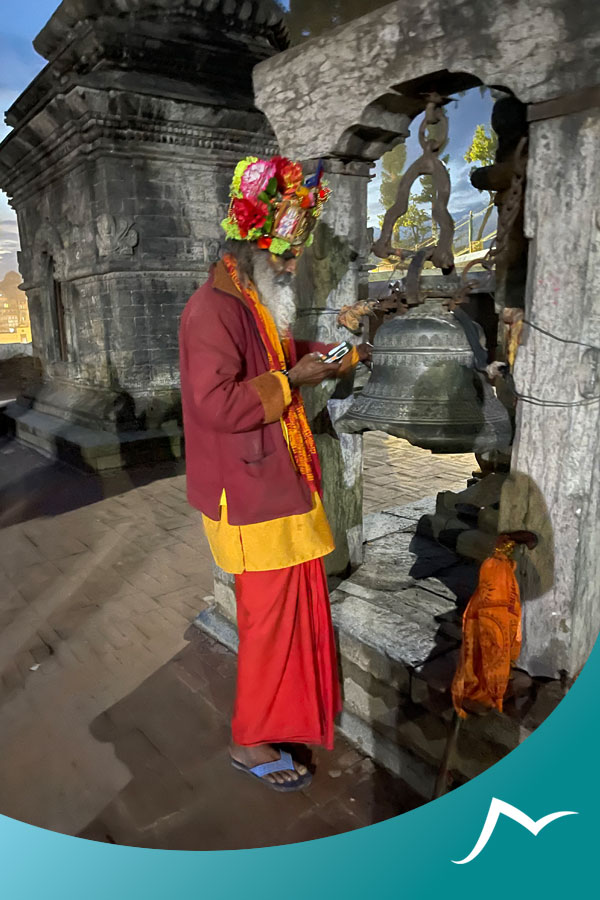
Through these interactions and many others, I gained a deeper appreciation for Pashupatinath’s role in the daily lives of the people of Nepal. For many, it is not just a temple but a central hub of community life, where people gather to pray, socialize, and connect. It was inspiring to see how the temple brings people together from all walks of life and witness the profound sense of belonging and connection it fosters.
Overall, my interactions with the locals at Pashupatinath were a powerful reminder of the beauty and richness of Nepali culture and of the power of human connection to bridge differences and unite us for a common purpose. Whether through sport, conversation or shared spiritual practices, it is clear that the people of Nepal are deeply connected to the spiritual heritage of their country.
FAQs
What is Pashupatinath Temple?
Pashupatinath Temple is a famous Hindu temple dedicated to Lord Shiva in Kathmandu, Nepal.
What is the significance of Pashupatinath Temple?
Pashupatinath Temple is considered one of the most sacred temples in Hinduism and is believed to be the abode of Lord Shiva. It is also a UNESCO World Heritage Site.
What is the dress code for visiting Pashupatinath Temple?
Visitors are required to dress modestly and cover their shoulders and legs. Shoes must be removed before entering the temple.
What are the opening hours of Pashupatinath Temple in the evening?
The temple is open from 4:00 am to 7:00 pm every day.
Is there an entrance fee for Pashupatinath Temple?
No, there is no entrance fee for the temple. However, donations are appreciated.
Can non-Hindus visit Pashupatinath Temple?
Yes, non-Hindus are allowed to visit the temple. However, they may not be allowed to enter certain areas of the temple.
What is the aarti ceremony at Pashupatinath Temple?
Aarati is a Hindu ritual involving the offering of light to deities. At Pashupatinath Temple, aarti is performed twice a day, in the morning and evening.
What is the best time to visit Pashupatinath Temple?
You may visit Pashupatinath any day. However, the best time to visit Pashupatinath Temple is during the Maha Shivaratri festival, which usually falls in February or March.
Is photography allowed inside Pashupatinath Temple?
Photography is generally not allowed inside the temple. However, there are designated areas where photography is permitted.
What time does the evening aarti ceremony take place at Pashupatinath Temple?
The evening aarti ceremony at Pashupatinath Temple usually takes place around 6:30 pm, but it is best to check with the temple authorities for the exact timing.
Conclusion
In conclusion, my visit to Pashupatinath was an unforgettable experience that offered a glimpse into the rich cultural heritage of Nepal and the profound spiritual significance of the temple in Hindu culture. From the vibrant atmosphere and stunning architecture to the powerful rituals and traditions, every aspect of the temple left a lasting impression on me.
As I reflect on my time at Pashupatinath, I am struck by the profound sense of connection and community that I witnessed among the people who call the temple home. From the friendly street vendors to the devoted pilgrims, everyone I encountered shared a deep reverence for the spiritual legacy of the temple and a commitment to upholding its traditions and rituals.
For those interested in visiting Pashupatinath, I recommend exploring the temple and its surrounding areas and engaging with the locals who call it home. I’m not too fond of the fact that entering the main temple is not allowed to non-Hindu people.
Whether you seek spiritual enlightenment, cultural exchange, or simply a beautiful and meaningful travel experience, Pashupatinath Temple will leave a lasting impression on your heart and mind.


